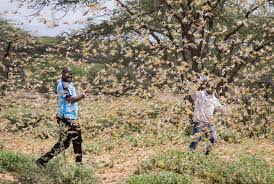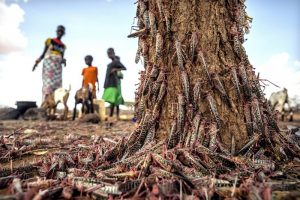

Alessandra Scotto di Santolo – December 17, 2020
A NEW generation of locust swarms is threatening to wipe out the livelihoods of farmers and herders across eastern Africa – deepening a food crisis in a region where 35 million people are already hungry, the United Nations warned on Wednesday.
From January to August, massive desert locust swarms swept across Somalia, Ethiopia and Kenya, ravaging crops and decimating pasture in the worst outbreak in decades. Governments, supported by U.N. agencies and international charities, responded with large-scale aerial and ground spraying of pesticides to destroy the swarms, which scientists have linked to climate change.
But widespread rains in Ethiopia and flooding caused by a cyclone in Somalia last month have created favourable breeding conditions, allowing locust infestations to increase, said the U.N. Food and Agriculture Organisation (FAO).
“We have achieved much, but the battle against this relentless pest is not yet over,” said FAO Director-General Qu Dongyu in a statement.
“We must not waver. Locusts keep growing day and night and risks are exacerbating food insecurity for vulnerable families across the affected region.”
Locust swarms are already forming in Somalia and Ethiopia and threaten to re-invade northern Kenya, while breeding is also underway on both sides of the Red Sea, posing a new threat to Eritrea, Saudi Arabia, Sudan and Yemen, said the FAO.





